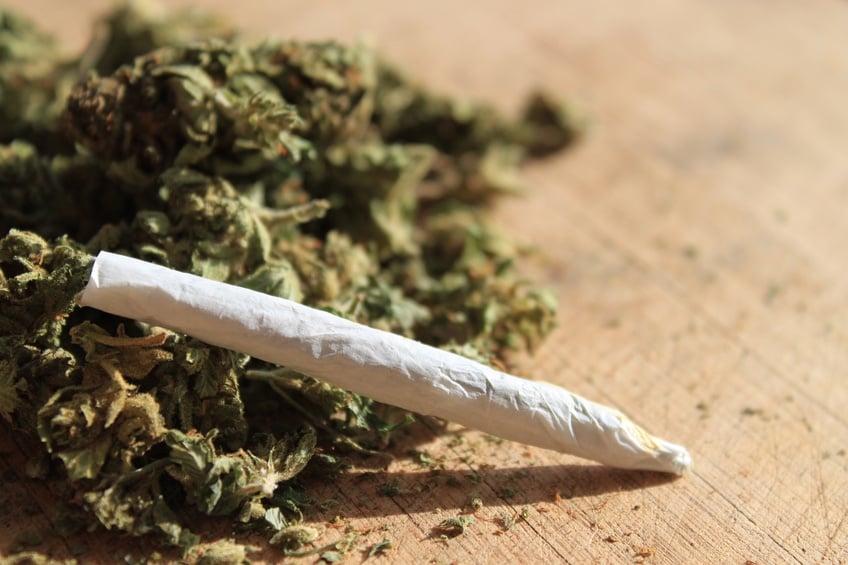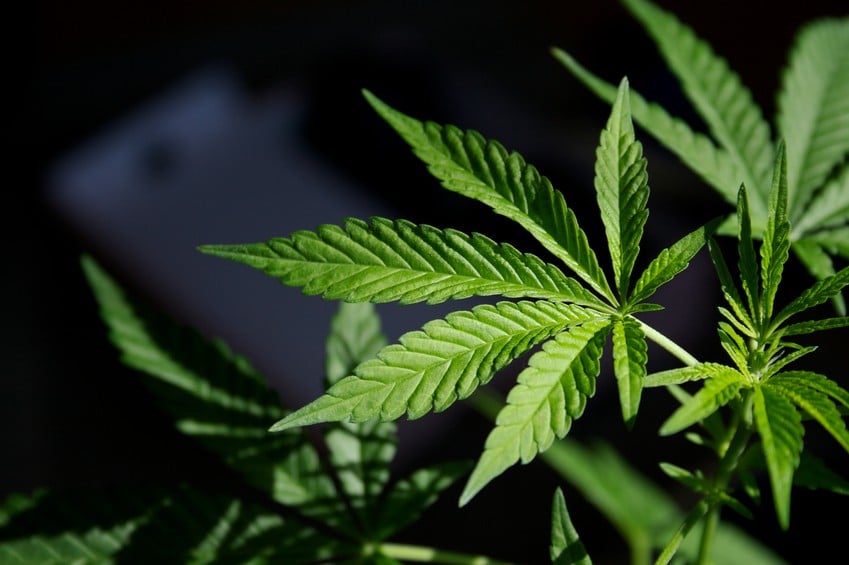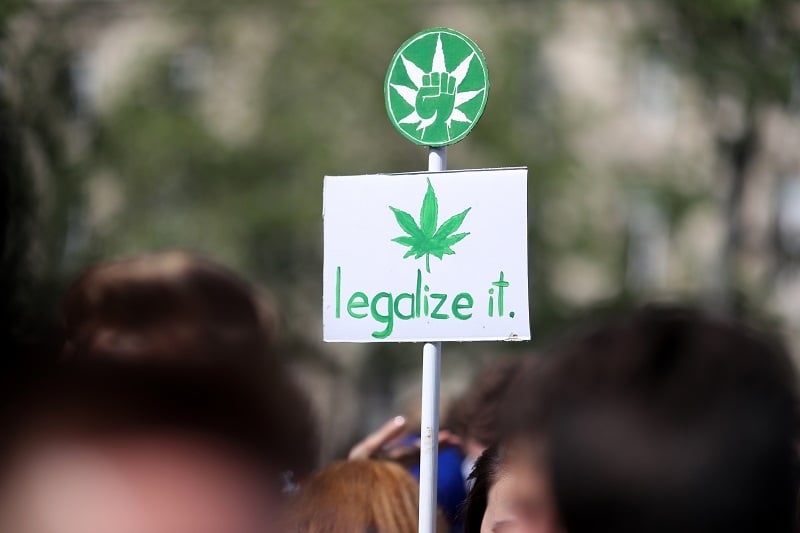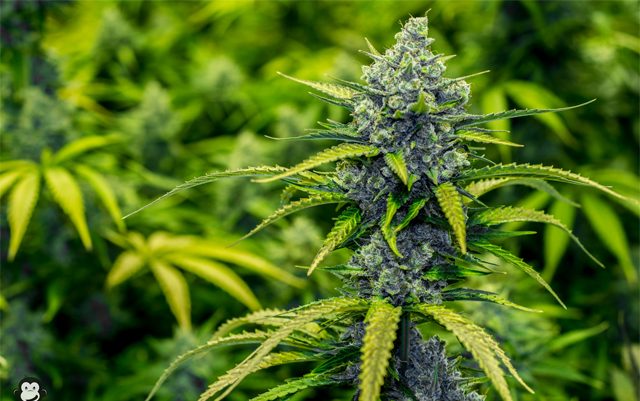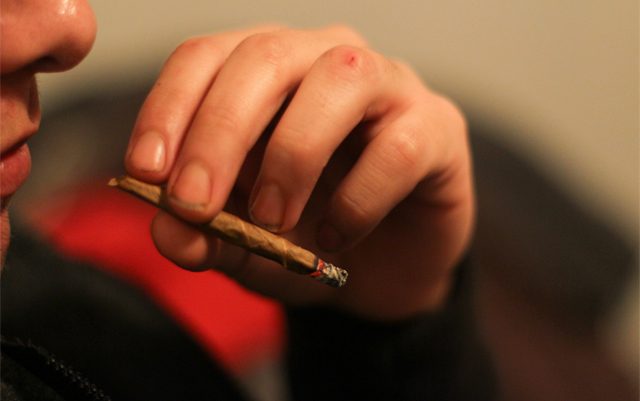As in the alcohol industry, tech platforms connect buyers with sellers but don't deliver themselves
by Ronny Kerr
There can be no doubt that the promise
of "on-demand" has fueled enormous growth in the technology industry
over the past half decade. Whether it's lunch or dinner coming from
DoorDash or Munchery, groceries coming from Instacart or Shipt,
toiletries coming from Postmates or Google Express, or super-fast
deliveries from Amazon Prime or Deliv, one thing is clear: if you want
an item or service instantly, you can bet there's a business to answer
the call.
The quintessential on-demand service is Uber, which has raised over $12 billion in outside capital for an app that sends a ride your way at the tap of a button. It's that simple.
So what about the cannabis space? Without getting into the stereotype of a cannabis user as too lethargic or uninspired to leave the couch, we can assume that most ordinary consumers would welcome the option to have their product delivered. If people want dinner and groceries delivered, why not have their cannabis delivered?
 Parallels in the alcohol industry
Parallels in the alcohol industry
As when we discuss other cannabis-related issues, the question inevitably turns to this: what are legitimate businesses already doing in analogous industries?
Over the past few years, a host of services have emerged to offer alcohol deliveries in under an hour.
One such company is Drizly, which earlier this month secured $15 million in Series B funding led by Polaris Partners. The service offers a beer, wine, and liquor marketplace in 23 markets across the U.S. and Canada.
Similar services are Minibar (which operates in 26 U.S. cities), Saucey (serving Los Angeles, San Francisco, San Diego, and Chicago), and Klink (serving Washington, D.C., Dallas, and Miami).
Even Instacart, one of the big names in grocery delivery, has partnered with Total Wine & More to offer delivery of wine and other products to six states.
Interestingly enough, many of these startups appear to be operating in a legal gray area. One resource from the National Conference of State Legislatures suggests that, in most cases, the only alcoholic beverage that can be shipped is wine. And yet these companies continue to operate as if they're perfectly legal.
The discrepancy is these companies technically don't handle the actual delivery of the product. As a spokesperson for Minibar explains:
"We actually do not ship alcohol; nor do we sell alcohol. Minibar Delivery is a technology platform that connects consumers to local licensed retailers who sell wine, liquor, and beer to be delivered.
All sales are made by a licensed retailer who delivers the order (and the stores require proof of age on delivery). Thus, shipping laws are not applicable, but rather local delivery laws, which vary by state."
Indeed, if you go to one of these sites, you must have a store operating in your area for alcohol to be delivered. When you complete your order on Minibar, which has just under 200 stores in its network, the site sends a notification (via email, fax, phone, or its online supplier portal) to the store.
The store then confirms the order, packs it up, and sends it out for delivery. After the sale, the store keeps the revenue from the sale, but it pays Minibar a monthly marketing fee to be listed on the site.
So while the process may seem seamless to the buyer, there are a number of moving parts behind the scenes to get alcohol delivered.


Tapping into on-demand cannabis
When it comes to ordering cannabis online for delivery, the process largely works in the same way.
One of the biggest names in the space, with $20 million in financing from Fresh VC, DCM Ventures, and Winklevoss Capital, Eaze connects verified medical cannabis patients with state-compliant dispensaries across California.
Though the company handles the initial order along with verification of the medical cannabis ID card, it then passes on the order to a dispensary which fulfills the order and employs its own drivers for deliveries. And, just as with the alcohol delivery companies, Eaze doesn't take a cut of individual transactions. Instead, the company charges dispensaries what a spokesperson describes as an "overall technology fee."
Today, Eaze operates in approximately 80 cities across California, letting users order medicinal cannabis through the website. In fact, the company wants to make the entire process as "easy" as possible, going as far as offering medical marijuana consultations over live video for $30.
Eaze isn't the only one offering on-demand cannabis delivery, however. A quick search for cannabis delivery returns dozens of services promising delivery of the product for both medical and recreational use. There's Trees (delivery in the San Francisco Bay Area), Greenz Direct Delivery and Speed Weed (delivery throughout California), and Marijuana Market and Your Cannabis Orders (nationwide deliveries)—just to name a few.
Opportunities and risks for on-demand cannabis
With cannabis still illegal under federal law, companies in the business of delivering cannabis for either recreational or medicinal use face significant risks.
Earlier this month, the Drug Enforcement Administration (the “DEA”) announced its decision to deny two petitions to reschedule cannabis under the Controlled Substances Act (the “CSA"), tampering hopeful expectations from the industry that legalization is around the corner.
And even in states with a grey area of legality, progress is still slow.
Since 2004, the state of California has only issued about 85,000 ID cards for medical cannabis patients. But because the cards are only valid for one year, there are less than 10,000 patients with currently valid cards. So California isn't exactly a massive market today. The states that have legalized cannabis for recreational use—Colorado, Washington, Oregon, and Alaska—would be better candidates as big delivery markets.
As yet, however, no large-scale platform like Eaze has emerged in these markets to offer up on-demand cannabis. Today, cannabis delivery appears to be largely handled by separate dispensaries on an individual basis.
Notably, eight states will be voting on the legalization of cannabis this November, which could exponentially widen the audience for Eaze and similar on-demand cannabis delivery companies.
California voters, for example, will decide whether to pass the Adult Use of Marijuana Act (Prop 64).
The potential outcome is huge: Dixie Elixirs CEO Tripp Keber told me his company's consumer base tripled overnight when Colorado legalized cannabis for recreational use.
"We were making more money in an eight-hour period than we were in previous months," he said.
It's likely that Eaze, its competitors, and its investors are simply expecting that, despite the slow progress in our legal system, legalization of cannabis will come sooner or later. And when it comes, the rapid acceleration in business will have been worth the wait.
The quintessential on-demand service is Uber, which has raised over $12 billion in outside capital for an app that sends a ride your way at the tap of a button. It's that simple.
So what about the cannabis space? Without getting into the stereotype of a cannabis user as too lethargic or uninspired to leave the couch, we can assume that most ordinary consumers would welcome the option to have their product delivered. If people want dinner and groceries delivered, why not have their cannabis delivered?
 Parallels in the alcohol industry
Parallels in the alcohol industryAs when we discuss other cannabis-related issues, the question inevitably turns to this: what are legitimate businesses already doing in analogous industries?
Over the past few years, a host of services have emerged to offer alcohol deliveries in under an hour.
One such company is Drizly, which earlier this month secured $15 million in Series B funding led by Polaris Partners. The service offers a beer, wine, and liquor marketplace in 23 markets across the U.S. and Canada.
Similar services are Minibar (which operates in 26 U.S. cities), Saucey (serving Los Angeles, San Francisco, San Diego, and Chicago), and Klink (serving Washington, D.C., Dallas, and Miami).
Even Instacart, one of the big names in grocery delivery, has partnered with Total Wine & More to offer delivery of wine and other products to six states.
Interestingly enough, many of these startups appear to be operating in a legal gray area. One resource from the National Conference of State Legislatures suggests that, in most cases, the only alcoholic beverage that can be shipped is wine. And yet these companies continue to operate as if they're perfectly legal.
The discrepancy is these companies technically don't handle the actual delivery of the product. As a spokesperson for Minibar explains:
"We actually do not ship alcohol; nor do we sell alcohol. Minibar Delivery is a technology platform that connects consumers to local licensed retailers who sell wine, liquor, and beer to be delivered.
All sales are made by a licensed retailer who delivers the order (and the stores require proof of age on delivery). Thus, shipping laws are not applicable, but rather local delivery laws, which vary by state."
Indeed, if you go to one of these sites, you must have a store operating in your area for alcohol to be delivered. When you complete your order on Minibar, which has just under 200 stores in its network, the site sends a notification (via email, fax, phone, or its online supplier portal) to the store.
The store then confirms the order, packs it up, and sends it out for delivery. After the sale, the store keeps the revenue from the sale, but it pays Minibar a monthly marketing fee to be listed on the site.
So while the process may seem seamless to the buyer, there are a number of moving parts behind the scenes to get alcohol delivered.


Tapping into on-demand cannabis
When it comes to ordering cannabis online for delivery, the process largely works in the same way.
One of the biggest names in the space, with $20 million in financing from Fresh VC, DCM Ventures, and Winklevoss Capital, Eaze connects verified medical cannabis patients with state-compliant dispensaries across California.
Though the company handles the initial order along with verification of the medical cannabis ID card, it then passes on the order to a dispensary which fulfills the order and employs its own drivers for deliveries. And, just as with the alcohol delivery companies, Eaze doesn't take a cut of individual transactions. Instead, the company charges dispensaries what a spokesperson describes as an "overall technology fee."
Today, Eaze operates in approximately 80 cities across California, letting users order medicinal cannabis through the website. In fact, the company wants to make the entire process as "easy" as possible, going as far as offering medical marijuana consultations over live video for $30.
Eaze isn't the only one offering on-demand cannabis delivery, however. A quick search for cannabis delivery returns dozens of services promising delivery of the product for both medical and recreational use. There's Trees (delivery in the San Francisco Bay Area), Greenz Direct Delivery and Speed Weed (delivery throughout California), and Marijuana Market and Your Cannabis Orders (nationwide deliveries)—just to name a few.
Opportunities and risks for on-demand cannabis
With cannabis still illegal under federal law, companies in the business of delivering cannabis for either recreational or medicinal use face significant risks.
Earlier this month, the Drug Enforcement Administration (the “DEA”) announced its decision to deny two petitions to reschedule cannabis under the Controlled Substances Act (the “CSA"), tampering hopeful expectations from the industry that legalization is around the corner.
And even in states with a grey area of legality, progress is still slow.
Since 2004, the state of California has only issued about 85,000 ID cards for medical cannabis patients. But because the cards are only valid for one year, there are less than 10,000 patients with currently valid cards. So California isn't exactly a massive market today. The states that have legalized cannabis for recreational use—Colorado, Washington, Oregon, and Alaska—would be better candidates as big delivery markets.
As yet, however, no large-scale platform like Eaze has emerged in these markets to offer up on-demand cannabis. Today, cannabis delivery appears to be largely handled by separate dispensaries on an individual basis.
Notably, eight states will be voting on the legalization of cannabis this November, which could exponentially widen the audience for Eaze and similar on-demand cannabis delivery companies.
California voters, for example, will decide whether to pass the Adult Use of Marijuana Act (Prop 64).
The potential outcome is huge: Dixie Elixirs CEO Tripp Keber told me his company's consumer base tripled overnight when Colorado legalized cannabis for recreational use.
"We were making more money in an eight-hour period than we were in previous months," he said.
It's likely that Eaze, its competitors, and its investors are simply expecting that, despite the slow progress in our legal system, legalization of cannabis will come sooner or later. And when it comes, the rapid acceleration in business will have been worth the wait.


